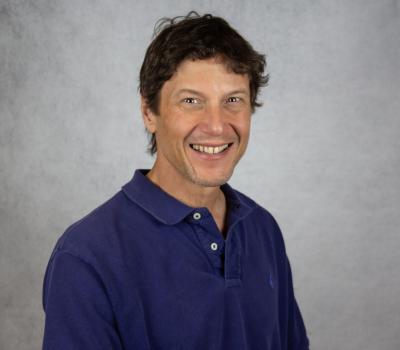John Conley’s career and life were shaped by his undergraduate days at The Pennsylvania State University: Not only did he discover an interest in electrical engineering and meet a professor who influenced his career path, but he got the bug for outdoor sports including backpacking and mountain biking.
The logic behind circuits is what initially hooked Conley on electrical engineering, but it was a class on electronic properties and materials that sparked his career path, a class that he now teaches at Oregon State.
“Part of the reason I wanted to become a professor was because of Dr. Patrick Lenahan, the professor who taught that class,” Conley said.
Lenahan offered Conley a job over the summer after his junior year which continued into his senior year. Their research led to Conley’s first academic paper while he was a senior. Lenahan also took Conley to his first academic conference. Conley had such a great experience, he decided to stay at Penn State for graduate school to continue working with Lenahan.
“I was so lucky to have somebody who got me interested and excited about research, so now that’s what I try to do with my students,” Conley said.
But his career did not start in academia. His early research focused on improving dielectric materials to protect microelectronics from radiation. The applications included protecting missile guidance systems for Dynamics Research Corporation, and protecting spacecraft from space radiation on planned trips to Jupiter for NASA's Jet Propulsion Laboratory (JPL).
“It was pretty cool to be working on space exploration and JPL was an incredible place to work,” Conley said, adding that Nobel laureates came to speak there on a regular basis.
The drawback was that he was living in Los Angeles which limited his easy access to outdoor activities. After a year, he was ready to leave the traffic and pollution of Los Angeles, and return to the Pacific Northwest where he had lived when he was working at Dynamics Research Corporation in Beaverton, Oregon.
“A lot of experimental work is serendipity. If you pay close attention to what you're doing, you can discover new, interesting phenomena for which you may not have been originally looking.”
His next move landed him in Camas, Washington where he applied his research to a very different application — consumer electronics for Sharp Laboratories of America. But what remained the same was that he continued to work on dielectric materials used as gate insulators in transistors. In his job as a senior scientist, he became an expert in atomic layer deposition (ALD) which is the cornerstone of much of his current work (he recently chaired the 17th International Conference on ALD). But he also had the opportunity there to test out new ideas.
“A lot of experimental work is serendipity. If you pay close attention to what you're doing, you can discover new, interesting phenomena for which you may not have been originally looking,” Conley said.
In one case, his experimentation started him on the path of working on nanotechnology. While tweaking a process of depositing indium tin oxide, a transparent conductor, he noticed that indium oxide nanocones were forming with catalytic tin “balls” on the ends.
“As a result, I ended up intentionally growing zinc oxide nanowires to make sensors out of them,” Conley said.
And although he enjoyed the job at Sharp and learned a lot there, he was still drawn to academia and his dream of becoming a professor. So, he made the move to Oregon State in 2007 where he has pursued a variety of research projects such as high-dielectric constant dielectrics for metal-insulator-metal capacitors, tunnel diodes, high-density memory to replace flash memory, and thin film transistors for applications such as transparent electronics.
Conley has found Oregon State to be a great place for collaborations and has worked with colleagues in electrical engineering, chemistry, physics, mechanical engineering, materials science and even forestry. He also works collaboratively outside of Oregon State, such as a project with Oregon Health and Science University spinout Pacific Diabetes Technologies to develop flexible glucose sensors for an artificial pancreas, as well as projects with Intel, ON Semiconductor, RedWave Energy, HP, and EMD Performance Materials. Additionally, he is a signature faculty fellow at Oregon Nanoscience and Microtechnologies Institute (ONAMI) — an Oregon based research center that fosters collaboration between academic, business and government organizations — and director of the OSU Materials Synthesis and Characterization (MaSC) Center. He also finds time for consulting and expert witness work.
“It’s the most fun job I’ve ever had,” Conley said, who enjoys teaching, especially Electronic Materials and Devices which is an undergraduate course very similar to the one that set him on his career path. And just as he did, some of the students in his class end up working in his lab and eventually become graduate students there, such as Arturo Valdivia, Melanie Jenkins, Konner Holden, and Dr. Dustin Austin who is now at Lam Research.
But every chance he gets he is outdoors — commuting to work by bike, mountain biking in MacDonald Forest, on camping trips with his daughter, a yearly backpacking trip with some buddies, or spending time with his son (who is pursuing a degree in computer science). He is excited that his young daughter, Sierra (named for his favorite mountain range), is now old enough for short backpacking trips and climbing mountains.

